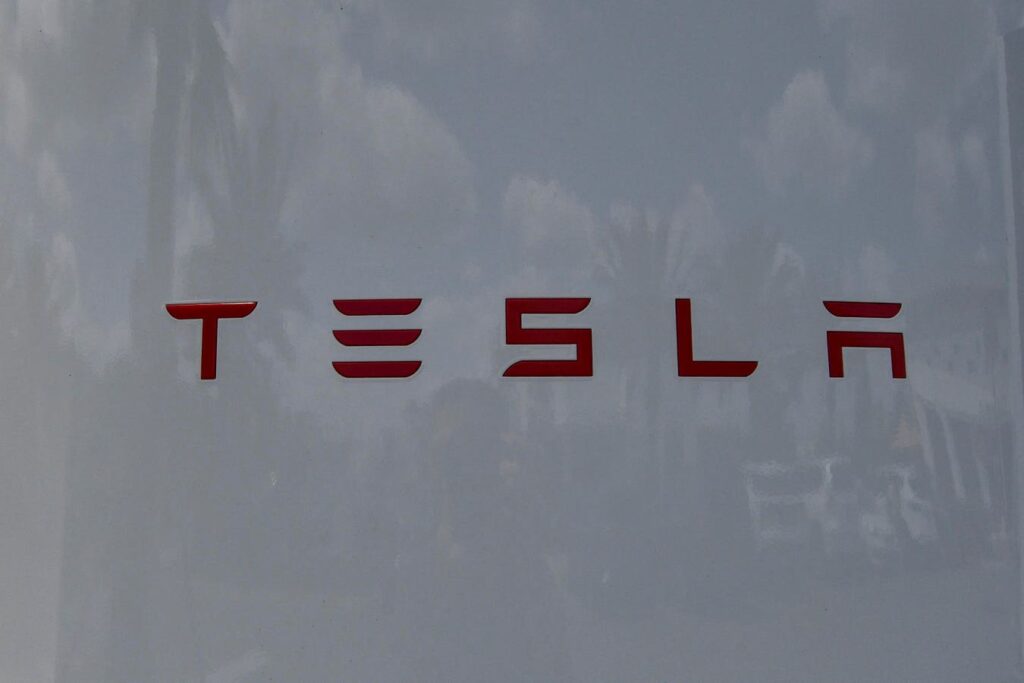Tesla stock fell by nearly 5% on Wednesday, bringing its year-to-date decline to approximately 35% due to concerns surrounding the U.S. economy, declining Tesla sales, and a weakening brand image. Despite the drop, Tesla shares still trade at over 95x estimated 2025 earnings and 70x 2026 earnings. This raises the question: does Tesla still warrant a growth stock valuation, or is the market pricing in a version of Tesla that no longer reflects current realities?
Tesla’s Brand & Demand Fading?
Tesla’s vehicle deliveries are on the decline. The company reported 336,681 deliveries in Q1 2025, a 13% year-over-year drop, reflecting pressures in various markets. Inventory levels are also rising, with production at 362,000 units in Q1 while deliveries totaled 336,000 — indicating a potential inventory increase of 26,000 vehicles.
U.S. sales declined about 9%, according to estimates from Cox Automotive. Although the Model Y refresh may have influenced results, it doesn’t fully account for the drop, especially since the new Model Y is widely available in the U.S. with little to no backlog. Tesla’s brand has suffered due to CEO Elon Musk’s political involvement, particularly his alignment with the Trump White House, which may alienate the company’s traditionally progressive customer base. Additionally, recent U.S. tariffs on imports pose recessionary risks. While Tesla’s domestic production offers some insulation, its reliance on components from China and Mexico exposes it to higher costs.
Tesla’s March sales in China reached 134,607 units, but the broader outlook remains murky. Heightened trade tensions and Musk’s political affiliations may diminish goodwill in a market that accounted for 21% of Tesla’s 2024 revenue. China has responded to U.S. tariffs exceeding 200% by hiking duties on U.S. goods to 125%, prompting Tesla to halt orders for imported Model S and X units. Meanwhile, domestic EVs are gaining traction with government support, and despite Tesla’s Shanghai Gigafactory having a capacity of over 950,000 vehicles per year, underutilization could compress margins.
In Europe, Tesla confronts similar issues, worsened by strained U.S. relations with allies under the Trump administration. Tesla’s market share in 15 countries dropped to 9.3% in Q1 2025, down from 17.9% a year ago. Musk’s endorsement of Germany’s far-right AfD party in the last election likely didn’t help its European reputation.
Does FSD Still Have An Edge?
A major component of Tesla’s high valuation is tied to investor expectations around its autonomous driving division. However, progress with Full Self-Driving (FSD) has been inconsistent. The software still faces multiple issues, and Tesla has a track record of overpromising and missing deadlines. Musk recently announced a bold goal of achieving unsupervised self-driving by June 2025, but given past delays, skepticism remains widespread.
For example, Musk previously claimed that version 13 of FSD software would deliver a 5 to 6x increase in miles between disengagements compared to version 12.5. This metric, which tracks the average distance before the system must be disengaged for safety, is a key benchmark. However, data indicates that v13 only achieved a 2.5x improvement — from 200 miles to 495 miles — still far below the 700,000 miles Tesla once said were necessary for parity with human drivers.
Meanwhile, competitors like Alphabet’s Waymo are advancing rapidly. As of early 2025, Waymo delivers over 200,000 paid robotaxi rides weekly in San Francisco, Los Angeles, and Phoenix — up from 10,000 in 2023 and 150,000 in late 2024. Their fleet operates completely autonomously, with no human supervision. Related: Can Waymo 3x Google Stock?Other players in Europe and China are also building their own autonomous solutions.
Should It Still Trade Like a Growth Stock?
The risks Tesla faces make it difficult to justify its $750 billion valuation. The company’s fundamentals do not support its premium. Growth is slowing, geopolitical and economic risks are increasing, and the brand’s momentum is fading. Tesla’s revenue rose just 1% in 2024, and analysts expect only about 9% growth in 2025 — a figure that could be downgraded if macro conditions worsen.
Additionally, Tesla stock has historically underperformed in downturns. For instance, during the 2022 inflation shock, the stock lost 73.6% of its value compared to a 25.4% peak-to-trough drop in the S&P 500. This suggests more potential downside ahead.
While Tesla maintains strong operations and financial health, as our assessment across Growth, Profitability, Financial Stability, and Downturn Resilience shows, the current valuation appears stretched. For investors seeking more stable returns with less volatility, the Trefis High-Quality portfolio offers an attractive alternative, having beaten the S&P 500 and generated over 91% returns since inception.
Invest with Trefis
Market Beating Portfolios | Rules-Based Wealth
Read the full article here
